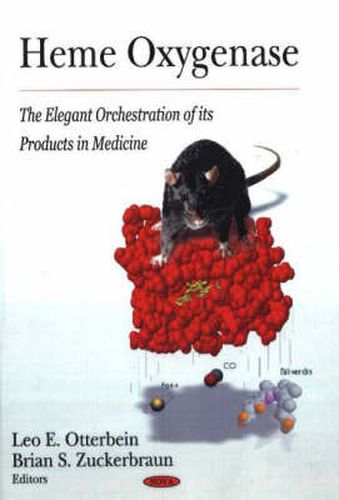Readings Newsletter
Become a Readings Member to make your shopping experience even easier.
Sign in or sign up for free!
You’re not far away from qualifying for FREE standard shipping within Australia
You’ve qualified for FREE standard shipping within Australia
The cart is loading…






Heme oxygenase is an enzyme which breaks down heme, the iron-containing oxygen-carrying constituent of the red blood cells. Heme must be synthesised and degraded within an individual nucleated cell, as heme is essential for the maintenance of cellular homeostasis by sensing or using oxygen. Physiological heme degradation is catalysed by the two functional isozymes of heme oxygenase, heme oxygenase-1 (HO-1) and HO-2, yielding CO, iron, and biliverdin IXN. Heme oxygenase-1 (HO-1), has potent anti-inflammatory, anti-oxidant and anti-proliferative effects, is up-regulated by multiple stimuli and provides protection against oxidative stress. HO-1 also plays an important role in the regulation of cardiovascular function and is involved in many other diseases such as sickle cell disease. This new book brings together leading research from around the world in this field.
$9.00 standard shipping within Australia
FREE standard shipping within Australia for orders over $100.00
Express & International shipping calculated at checkout
Heme oxygenase is an enzyme which breaks down heme, the iron-containing oxygen-carrying constituent of the red blood cells. Heme must be synthesised and degraded within an individual nucleated cell, as heme is essential for the maintenance of cellular homeostasis by sensing or using oxygen. Physiological heme degradation is catalysed by the two functional isozymes of heme oxygenase, heme oxygenase-1 (HO-1) and HO-2, yielding CO, iron, and biliverdin IXN. Heme oxygenase-1 (HO-1), has potent anti-inflammatory, anti-oxidant and anti-proliferative effects, is up-regulated by multiple stimuli and provides protection against oxidative stress. HO-1 also plays an important role in the regulation of cardiovascular function and is involved in many other diseases such as sickle cell disease. This new book brings together leading research from around the world in this field.